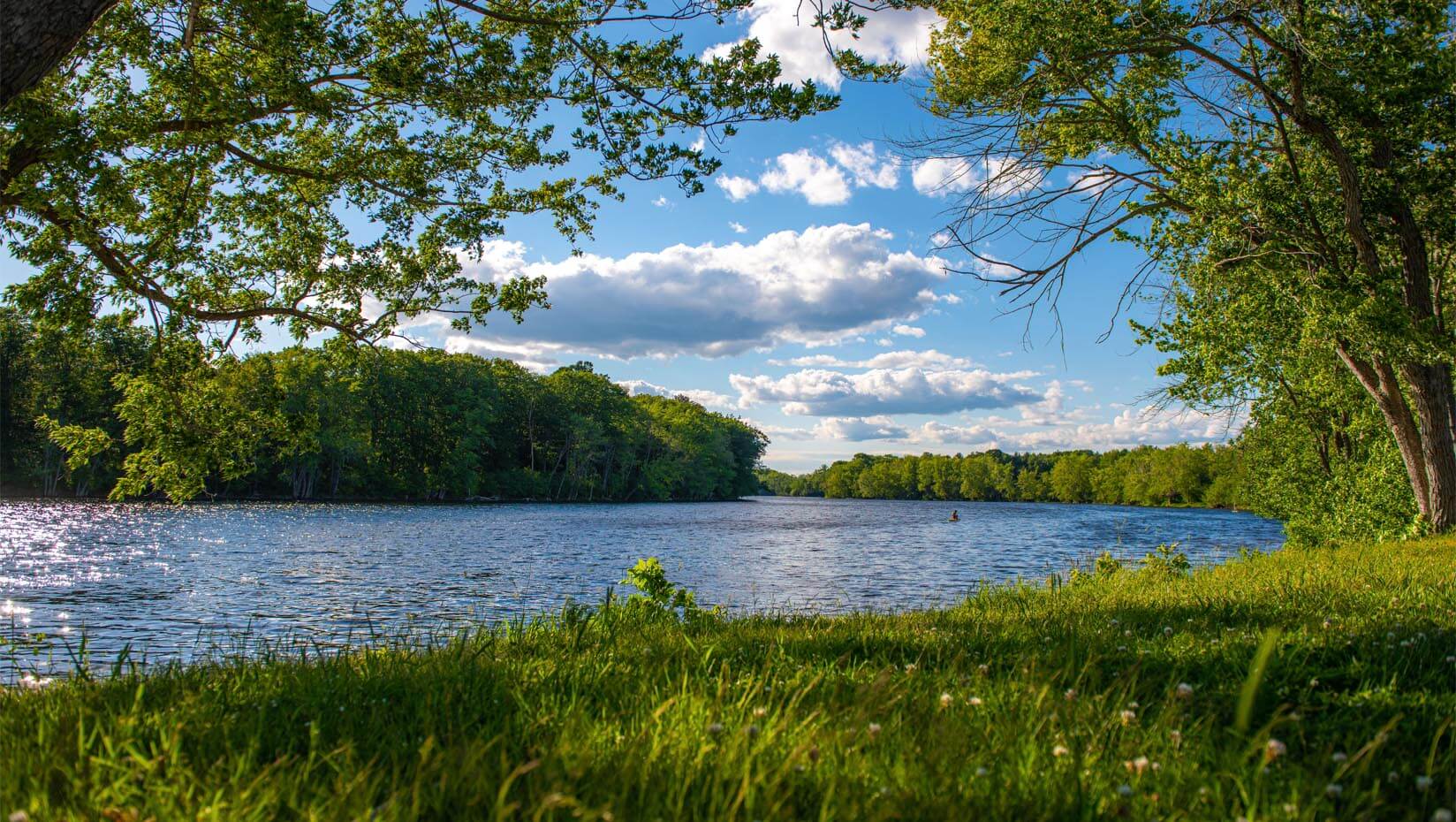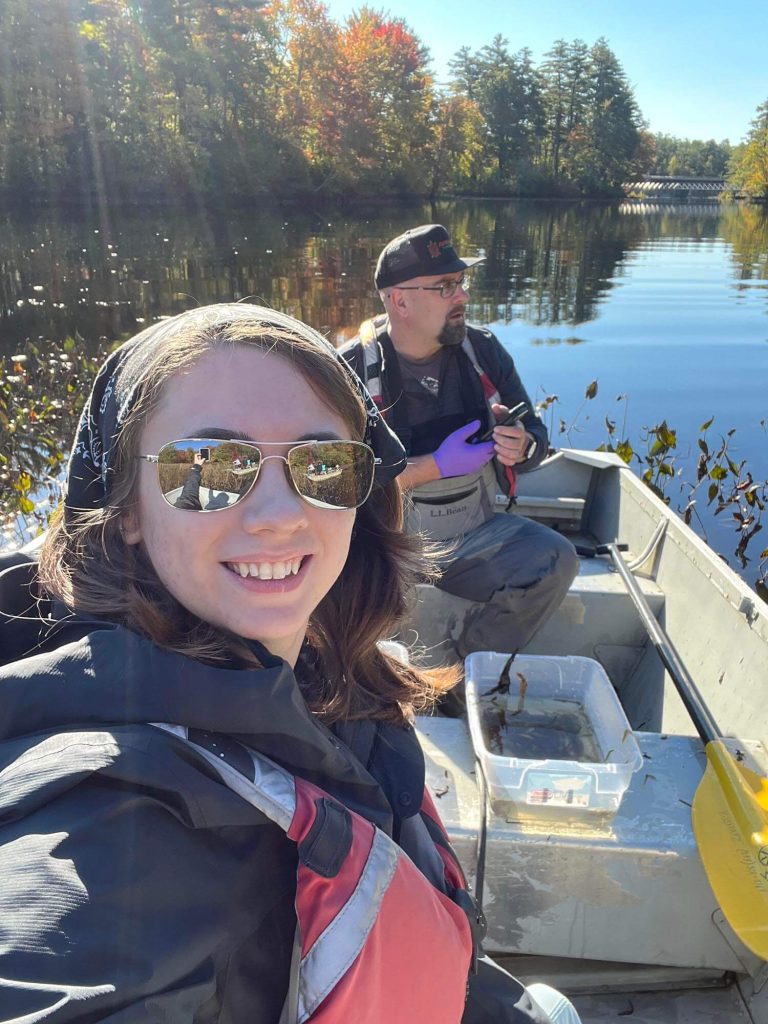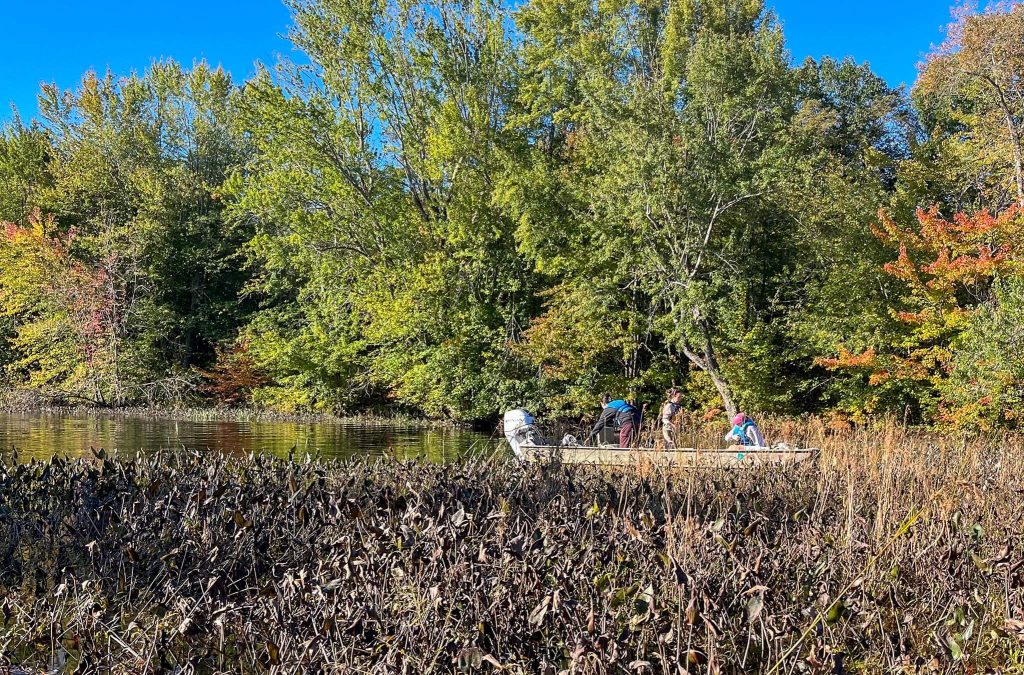
As innovative training program in conservation ends, its legacy lives on beyond UMaine
Conservation is a multi-dimensional issue that goes beyond preserving the environment. Conservationists not only need ecological expertise, but also have to understand the impact of conservation on the economics and culture of an area, be able to interact with the public about issues of conservation and so much more.
Through a program funded by the National Science Foundation (NSF), University of Maine graduate students have had the opportunity to cultivate the interdisciplinary skills required for conservation. UMaine’s NSF Research Traineeship (NRT) Program in Conservation Science and Practice has reached the end of its five-year term, but it has sent UMaine graduates off with a more holistic approach to conservation and started a legacy of similar programs at UMaine.
What is NRT?
NSF started the NRT program in 2014 to train graduate students in science, technology, engineering and mathematics (STEM) programs with interdisciplinary skills to better prepare them for the changing nature of research and the workforce. At the crux of the program is a traineeship, where students partner with a local organization, company or researcher to apply the skills they learn.
Sandra De Urioste-Stone, UMaine associate vice president for research, professor of nature-based tourism at the School of Forest Resources and a faculty fellow at the Senator George J. Mitchell Center for Sustainability Solutions, saw the NRT program as a great opportunity for UMaine, especially in conservation. Maine is a living laboratory for conservation science with plenty of opportunities for traineeships, and she had already begun building networks in the field. De Urioste-Stone collaborated with the Mitchell Center to build the interdisciplinary element of the NRT.
“The Mitchell Center was one of those spaces that let me connect with other people in drafting proposals and working collaboratively on research projects,” said De Urioste-Stone. “Later on, this led to connections that allowed for a larger grant like NRT.
The alumni

Twenty-eight graduate students went through the program as “trainees” over its five years. Alumni of the NRT reflect fondly on how the program set them up for success.
Lydia Horne was in the first NRT cohort in 2019 during her Ph.D in ecology and environmental sciences program. Through her Ph.D., which was partially supported by the Mitchell Center, Horne focused on community resilience as Maine’s tourism industry adjusts to the impacts of climate change. De Urioste-Stone was her advisor, and told Horne she would be a good fit for the program.
Horne said that the highlights of the NRT program were the faculty and her peers, with whom she has maintained close personal and professional relationships even after the program ended.
“It all comes down to the cross pollination of ideas from this big network of people that are all trying to achieve something,” Horne said. “It has made me really adaptable to working on different teams and different projects.”
Horne said that the NRT informed the interdisciplinary research she continued to pursue after graduation, from post doctoral research in the science of learning and assessment in STEM education to designing curriculum in tourism and hospitality.
Now, Horne is back at UMaine pursuing postdoctoral research at the School of Forest Resources that looks at rural community resilience.
Annie Stupik joined the NRT in fall 2021. She was pursuing a graduate degree in the wildlife ecology program and studying the relationship between winter ticks and moose, but she wanted to explore the bigger picture of conservation work. Before returning to graduate school, she participated in the Peace Corps, and saw first hand the multifaceted nature of big problems.
“I care about more than just the wildlife science,” Stupik said. “I think it gets us outside of our comfort zone a little bit to have us meet people who we wouldn’t normally interact with within our specific program area or major.”
Stupik now works for the New York State Department of Environmental Conservation as the state invertebrate biologist. She said that the NRT encouraged her to apply for jobs that were more focused on conservation projects and programming rather than research, and allowed her to build her resume enough to be competitive for these jobs.
“The NRT program helped me realize that the ‘soft skills’ are just as important as the ‘hard skills,’” Stupik said. “I’m not always the best biologist or scientist, but being able to work with people is arguably one of the most important things you can have if you really want to make a difference in the world of conservation.”
Allison Foster, who also participated in the Mitchell Center’s Sustainability Graduate Fellows program, said she especially enjoyed the cohort of students that she was with in the program in fall 2022 and spring 2023. Foster’s cohort wrote a Maine Outdoor Heritage Fund grant with the Penobscot Nation as part of one of their classes, and it recently received funding.
Foster also said that the internship that she had during the NRT at the Biodiversity Research Institute in Portland became her post-graduate job as a science communications coordinator. She said that the experience interacting with researchers across disciplines in the NRT has helped in her new position, allowing her to “float within the different departments” so she can communicate science from toxicology and bird ecology to offshore wind development.
Foster isn’t the only one who obtained a job out of the NRT program. Nelson said that not only did Appalachian Mountain Club (AMC) host two graduate interns who helped to spark new research on habitat connectivity and strengthen regional citizen science, they also hired AMC’s first-ever science communicator: NRT alumnus Gabriella Gurney.
“Her skills bridging science, practitioner and community engagement and communications have made her an invaluable addition to our team,” Nelson said.
The UMaine NRT structure
The NRT Program in Conservation Science and Practice — which, when it was awarded in 2019, was the first NRT in the state — was helmed by 10 faculty members from different disciplines, over half of whom were also Mitchell Center faculty fellows. The faculty developed five new, specialized courses in topics like science communication, interdisciplinary research and organizational behavior that NRT participants would take in addition to courses for their degree. The NRT also recruited nine faculty to teach classes that counted towards other program requirements.
Laura Rickard, associate professor and graduate coordinator in the Department of Communication and Journalism and faculty fellow at the Mitchell Center, was part of the leadership team that developed the NRT and taught classes about communication theory and risk communication that counted towards the students’ requirements.
“This interdisciplinarity is critical for NRT trainees, who often come from disciplines other than communication (or even the social sciences more generally), and will need to grasp (or at least appreciate) multiple perspectives to solve the type of real-world conservation problems we face,” Rickard said.

The program aimed for students to develop expertise in at least two scientific areas: their primary area of study, like biology or ecology, and a secondary discipline, usually a social science.
Aaron Weiskittel, professor of forest biometrics and modeling, director of the Center for Research on Sustainable Forests and faculty fellow at the Mitchell Center, was also on the leadership team for the NRT. He said he immediately saw the benefit of the program’s structures for UMaine centers and departments like the School of Forest Resources.
“By training the next generation of conservation leaders to integrate biophysical and socioeconomic sciences, the NRT program contributes directly to our goal of enhancing understanding of Maine’s forest resources in an increasingly complex world. This collaborative, solutions-driven approach is essential for addressing current and future issues in natural resources management and sustainability,” Weiskittel said.
The NRT had a robust network of 14 partners with state and federal agencies, nonprofit organizations and Tribal Nations that they could tap into for student internships as well. The students submitted a plan for their internship to the partners and had it approved, almost like a contract. They wrote regular reflections on the internship, and also presented a poster about it at the program’s annual retreat.
Sarah Nelson, a former UMaine associate professor, started as one of the co-principal investigators on the NRT and eventually went on to host internships at the AMC.
“The AMC’s mission to foster the protection, enjoyment and understanding of the outdoors aligns with the NRT’s focus on science and skill sets that underpin action, policy and communication in the conservation space,” said Nelson, now director of research for the club.
Facing challenges in the NRT
After a year of planning, the NRT welcomed its first cohort of graduate students in 2019. In 2020, however, they had to make significant changes in order to deal with the COVID-19 pandemic.
“We had students doing reflective journaling throughout the program. That was helpful to get quick feedback that allowed us to be more responsive in a very challenging time,” De Urioste-Stone said. “We learned a lot from that first year.”
The NRT team continued to learn throughout the course of the program. De Urioste-Stone said that after a couple years, they started creating a list of needs and potential opportunities with partners to better match graduate students with internships based on the skills they had, and what they wanted to learn.
Emily Uhrig served as the program coordinator for three years starting in 2021. In addition to developing and facilitating a workshop on communicating research to non-technical audiences, which she ran with assistant research professor Jessica Jansujwicz in conjunction with the Mitchell Center’s Future Sustainability Leaders program, she handled program logistics, including organizing events, managing communications and coordinating internships.
“The NRT was always a student-centered program, but I think it became even more so over the years as we listened to trainee feedback and made adjustments,” Uhrig said. “We asked trainees what kinds of professional development they were interested in and planned activities accordingly.”
The legacy and future of NRT
De Urioste-Stone said that the feedback they received from the trainees and faculty showed that the NRT had a significant impact on their lives. It elevated applied learning experiences, allowed students and faculty to collaborate more closely, expanded research across disciplines and strengthened relationships with partners in the field. De Urioste-Stone also said that the traineeship contributed to 109 publications over the course of its life.
UMaine has also used lessons learned from this graduate student training program to strengthen other cohort building and professional development initiatives. For example, NSF research projects such as Maine-FOREST, or Forest-based Opportunities for Resilient Economy, Sustainability and Technology, have benefited from this approach. NSF funded the traineeship through its Established Program to Stimulate Competitive Research (EPSCoR) Collaborations for Optimizing Research Ecosystems Research Infrastructure Improvement Program (E-CORE RII).
The Enhancing Conservation Science NRT may be in its final stages, but there are still three other NRTs at UMaine. These include One Health and Environment (which De Urioste-Stone is also involved with), Systems Approaches to Understanding and Navigating the New Arctic (SAUNNA), and the latest, 3-D Ecosystem Science. A number of Mitchell Center faculty play important leadership roles in all of the UMaine NRTs.
“It is exciting and gratifying to see the ways these outstanding faculty are continuing to grow UMaine’s national and global leadership in solutions-driven, interdisciplinary research partnerships,” said David Hart, director of the Mitchell Center.
Contact: Ruth Hallsworth, hallsworth@maine.edu
